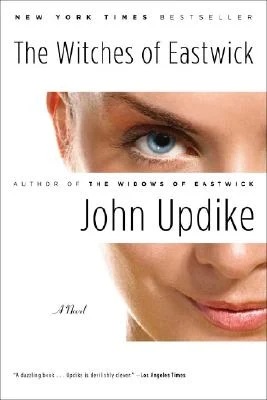[ad_1]
Around the time that Donald Trump was elected president in late 2016, a phrase began circulating periodically on my social media feeds: “We are the granddaughters of the witches you couldn’t burn.” This pithy rejoinder to patriarchal overreach was taken from a 2015 Tish Thawer novel but has since taken on a life of its own. Search on Etsy and you’ll find it splashed across tee shirts, bumper stickers, and coffee mugs. I was reminded of it again recently when the draft of Samuel Alito’s opinion to overturn Roe v. Wade was leaked. In addition to the alarming disregard this document shows for protecting the rights of anyone who’s not a straight white cis man, it is notable for its citations of a 17th-century English judge named Sir Matthew Hale.
Hale may no longer be a household name, but his beliefs have a long and sordid history of influence on some of our most shamefully misogynist legislation. He was a proponent of the so-called “marital rape exemption,” which held that wives couldn’t be sexually assaulted by their spouses and was an accepted legal principle in America until states began overturning it in the 1970s. His pronunciation that rape was “an accusation easy to be made and hard to be proved” provided a framework that is still used to dismiss such claims in courts today. He also almost single-handedly revived a practice that had been on the wane in his country, and ours: accusing women of witchcraft, sentencing Amy Denny and Rose Cullender to hang for it in 1662. The written record of those proceedings served as the model for the 1692 trials in Salem, Massachusetts, with the first execution taking place on June 10, three hundred and thirty years ago. Not so long, in the grand scheme of things.
Witches have always been a convenient symbol of feminine mystery and monstrosity in the popular imagination, reflecting the moral fabrics and fears of their times, but it’s relatively recently that women have co-opted the term witch as an honorific rather than an epithet. Fifty-odd years ago, covens were the locus of Satanic activity in such movies and books as Rosemary’s Baby and Suspiria. But the rise of second-wave feminism and women in the workforce in the late ’70s and early ’80s gave way to a gentler, more domestic spellcaster, a trend arguably initiated by John Updike’s 1984 novel The Witches of Eastwick and the film adaptation three years later. Even in that short span of time there are marked differences between the two, and comparing them now, in the wake of so much dispiriting news out of Washington, shows just how quickly public opinion can change when it comes to women’s autonomy.
Let’s start with what the book and film share in common: They are both set in the small, idyllic town of Eastwick, Rhode Island. Both feature three women—Alexandra, Sukie, and Jane—whose shared divorcee status and modest artistic ambitions set them apart from the other townspeople as objects of suspicion. Both are shaken up by the arrival of the devilish Daryl Van Horne. And both feature tennis sequences that go on for far longer than seems necessary.
Updike’s novel was viewed as a departure for the author at the time. Most of his previous work was steeped in middle class realism, bound by such earthly concerns as which friend’s wife to sleep with and the masculine urge to escape from familial obligations. The inner lives of women were not often foregrounded, to put it generously, though Updike was one of our most skilled sensualists, and it’s clear he admired the “fairer sex,” even if he didn’t always understand them. The Witches of Eastwick was his attempt to do so—he admitted as much, once quoted as saying he wrote it to “make things right with my, what shall we call them, feminist detractors.” It’s almost as if his decision to set the novel in a world under the influence of magic is a way for him to hedge his bets. If something didn’t ring true to his female readership, it could be attributed to the three women’s unique powers. “Exceptional” women don’t have to live by the same rules as regular ones, even if those rules are still written by men.
Perhaps that’s a bit unfair to Updike, but the fact remains that the book is couched in a distinctly patriarchal viewpoint, satirical or not. Alexandra is consumed with worries about her weight. When she gets together with Sukie and Jane for weekly cocktails, the three gossip cattily about the local housewives and obsess over finding the perfect man. In a plotline (wisely) excised entirely from the film, Daryl eventually takes a younger wife named Jenny, whom the three witches promptly curse with terminal cancer. The logistics of raising children alone (Sukie has six) is kept mostly off the page. If these witches are “bad” they’re still limited by a man’s idea of what being bad entails. As in colonial times, witchcraft is the vocation of the unconventional woman, which in Updike’s modern conception means the witches lose their powers when they find new mates and drift away from Eastwick. For a modern reader, it’s a deflating climax. If this is intended as a commentary on the shortcomings of feminism for the average woman, it seemed to satisfy in 1984, when openly identifying with the movement was still a radical position to take. But a reader in 2022 may wish for a bit more fire and brimstone.
The film certainly delivers on that front, and in tweaking Updike’s plot to be more conventionally satisfying for moviegoers, it improves it in other ways as well. Directed by George Miller, best known for the Mad Max franchise, it’s fizzier and more irreverent in tone than the novel. It’s also more grotesque, with several sequences that make ample use of then-revolutionary special effects. The casting feels very of its time as well, with the three witches played by Cher, Susan Sarandon, and Michelle Pfeiffer. And there is perhaps no actor more ideally suited for a character that Updike described as “distracted by a constant slipshod effort to keep himself together” than Jack Nicholson, who revels in Daryl’s vulgar ostentation. There’s also the winking presence of Veronica Cartwright, familiar to cinephiles for her roles in three iconic horror films: The Birds, the 1978 Invasion of the Body Snatchers, and Alien. Cartwright plays Felicia Alden, who has a sixth sense for the evil descending on the town and is punished for it, warping from a picture-perfect suburban housewife to an invective-spewing (and cherry pit-spewing) harpy, raving about whores and dildoes in the middle of a church service like a possessed Phyllis Schlafly. Eventually her mild-mannered husband kills her with a fire poker while she’s in the midst of a fit before calmly returning to his armchair. The witches aren’t directly responsible for her demise (as they are for Jenny’s in the novel) but are plagued by guilt over it nonetheless.
The thing is Felicia is right that Daryl has sinful intentions. Or at least not honorable ones. He seduces each of the witches with his chameleonic charm, molding himself into whatever image they desire, his manipulative fluency in telling them what they want to hear foreshadowing our current era of reply guys and pickup artists. When the women inevitably turn on him, he becomes weak and vindictive, using their intimate fears against them. “I couldn’t hurt you. I love you,” he whines to a defiant Alexandra, a line straight out of the abuser playbook. By the end he’s turned feral, his growling demonic interior pushing through the human exterior, revealing the true ugliness within. They cast a spell to banish him but, in the most elemental way, it’s too late: all three are pregnant. Jump eighteen months later and the witches are living together in Daryl’s old mansion with their children in a makeshift matriarchy. It’s an ending that gives them more agency than Updike’s, even as it has its own flaws. They don’t burn at the stake, but it’s difficult to say they truly triumph either. The vigilance motherhood requires can be a curse, even when it’s freely chosen, and if you’re raising the devil’s progeny you need to be more vigilant than most.
So where does that leave us today, post-third-wave and likely post-Roe? Though neither Updike nor Miller set out to predict our fracturing present, both versions of The Witches of Eastwick now feel like a warning, or at least a precaution. Magic has its limits, both personally and politically. A woman’s right to bodily autonomy is no longer a fringe belief, no matter what men in power like Alito might think. It’s important to keep reminding them of that, in the streets and in our art. For our granddaughters, if not for ourselves.

FICTION
The Witches of Eastwick
By John Updike
Random House Trade
Published August 27, 1996
Originally published April 12, 1984

[ad_2]
Source link

